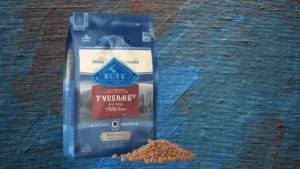The Reality Of The Dog Food Label
When it comes to feeding our furry friends, we want to provide them with the best possible nutrition. We often rely on the information printed on dog food labels to make informed decisions. However, understanding the nuances of these labels can be challenging. Let’s delve into the reality behind dog food labels and learn how to decipher them effectively.
Decoding Dog Food Labels: Key Ingredients
- Meat Sources: The first ingredients listed typically indicate the primary meat sources. Look for whole, named meats like chicken, beef, or lamb, as these provide higher-quality protein. Avoid labels with vague terms like “meat by-products” or “animal protein,” which may contain less desirable ingredients.
- Carbohydrates: Dogs can tolerate some carbohydrates, but excessive amounts can lead to weight gain and other health issues. Opt for whole grains like brown rice or oats, as they provide fiber and nutrients. Avoid fillers like corn, wheat, or soy, which may be difficult for some dogs to digest.
- Vitamins and Minerals: Essential vitamins and minerals are crucial for a dog’s overall health. While labels may list these nutrients, it’s important to ensure they are from natural sources rather than synthetic additives.
- Preservatives: Many dog food brands use preservatives to extend shelf life. While some preservatives are safe, others may be harmful. Look for labels that avoid artificial preservatives and opt for natural alternatives like vitamin E or rosemary extract.
Understanding Label Claims
- “Holistic” or “Natural”: These terms are often used to evoke a sense of quality but may not have specific meanings. Look for labels that clearly list the ingredients and avoid vague claims.
- “Grain-Free”: While grain-free diets may be suitable for dogs with allergies, they may not be necessary for all. Consult with a veterinarian to determine if a grain-free diet is right for your dog.
- “Hypoallergenic”: This term indicates a formula designed for dogs with allergies. Look for labels that specify the ingredients used to minimize allergic reactions.
Tips for Choosing the Right Dog Food
- Read the Ingredients Carefully: Pay attention to the order in which ingredients are listed, as the first few ingredients are typically present in the highest quantities.
- Consult with a Veterinarian: A veterinarian can provide personalized recommendations based on your dog’s age, breed, and health needs.
- Consider Your Dog’s Preferences: While nutritional value is essential, it’s also important to choose a food that your dog enjoys eating.
Decoding dog food labels can be overwhelming, but by understanding the key ingredients and claims, you can make informed decisions about your dog’s nutrition. Remember, the best dog food is one that provides balanced nutrition, meets your dog’s specific needs, and is enjoyed by your furry friend.
Keywords: dog food labels, dog nutrition, healthy dog food, ingredients, meat sources, carbohydrates, vitamins, minerals, preservatives, holistic, natural, grain-free, hypoallergenic, veterinarian recommendations.














